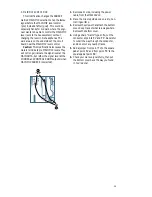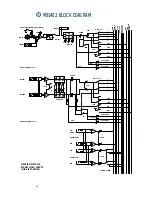
43
trim
In audio mixers, the gain adjustment for the
first amplification stage of the mixer. The trim
control helps the mixer cope with the widely
varying range of input signals that come from
real-world sources. It is important to set the
trim control correctly; its setting determines
the overall noise performance in that channel
of the mixer. See
mic preamp.
TRS
Acronym for Tip-Ring-Sleeve, a scheme for
connecting three conductors through a single
plug or jack.
1
⁄
4
" phone plugs and jacks and
1
⁄
8
"
mini phone plugs and jacks are commonly
wired TRS. Since the plug or jack can carry
two signals and a common ground, TRS con-
nectors are often referred to as stereo or
balanced plugs or jacks. Another common TRS
application is for insert jacks, used for insert-
ing an external processor into the signal path.
In Mackie mixers the tip is send, ring is return,
and sleeve is ground.
TS
Acronym for Tip-Sleeve, a scheme for con-
necting two conductors through a single plug
or jack.
1
⁄
4
" phone plugs and jacks and
1
⁄
8
" mini
phone plugs and jacks are commonly wired TS.
Sometimes called mono or unbalanced plugs
or jacks. A
1
⁄
4
" TS phone plug or jack is also
called a standard phone plug or jack.
unbalanced
An electrical circuit in which the two legs of
the circuit are not balanced with respect to
ground. Usually, one leg will be held at ground
potential. Unbalanced circuit connections re-
quire only two conductors (signal “hot” and
ground). Unbalanced audio circuitry is less
expensive to build but under certain circum-
stances is more susceptible to noise pickup.
unity gain
A circuit or system that has its voltage gain
adjusted to be one, or unity. A signal will leave a
unity gain circuit at the same level at which it
entered. In Mackie mixers, unity gain is
achieved by setting all variable controls to the
marked “U” setting. Mackie mixers are opti-
mized for best headroom and noise figures at
unity gain.
VLZ
Acronym for very low impedance.
(Impedence is measured in ohms represented
by the
Ω
symbol, which is the last letter of the
Greek alphabet. This is how the letter Z is
used instead of I.) VLZ is one of the most im-
portant reasons why inherent noise levels on
Mackie mixing boards are so minuscule. Ther-
mal noise is something that’s created by all
circuitry and usually transistors and resistors
are the worst culprits. The basic rule with
thermal noise is: the higher the impedance,
the more the noise. Mackie’s VLZ design re-
duces thermal noise by making internal
impedances as low as possible in as many
places as possible within the console. VLZ is
achieved by scaling down resistor values by a
factor of three or four – resulting in a corre-
sponding reduction in thermal noise. This is
especially true for the console’s mixing buses.
volume
Electrical or sound level in an audio system.
Perhaps the only thing that some bands have too
much of.
VRMS
See
RMS.
wet
With added reverberation or other effect
like echo, delay or chorusing.
XLR connector
See
Cannon.









































